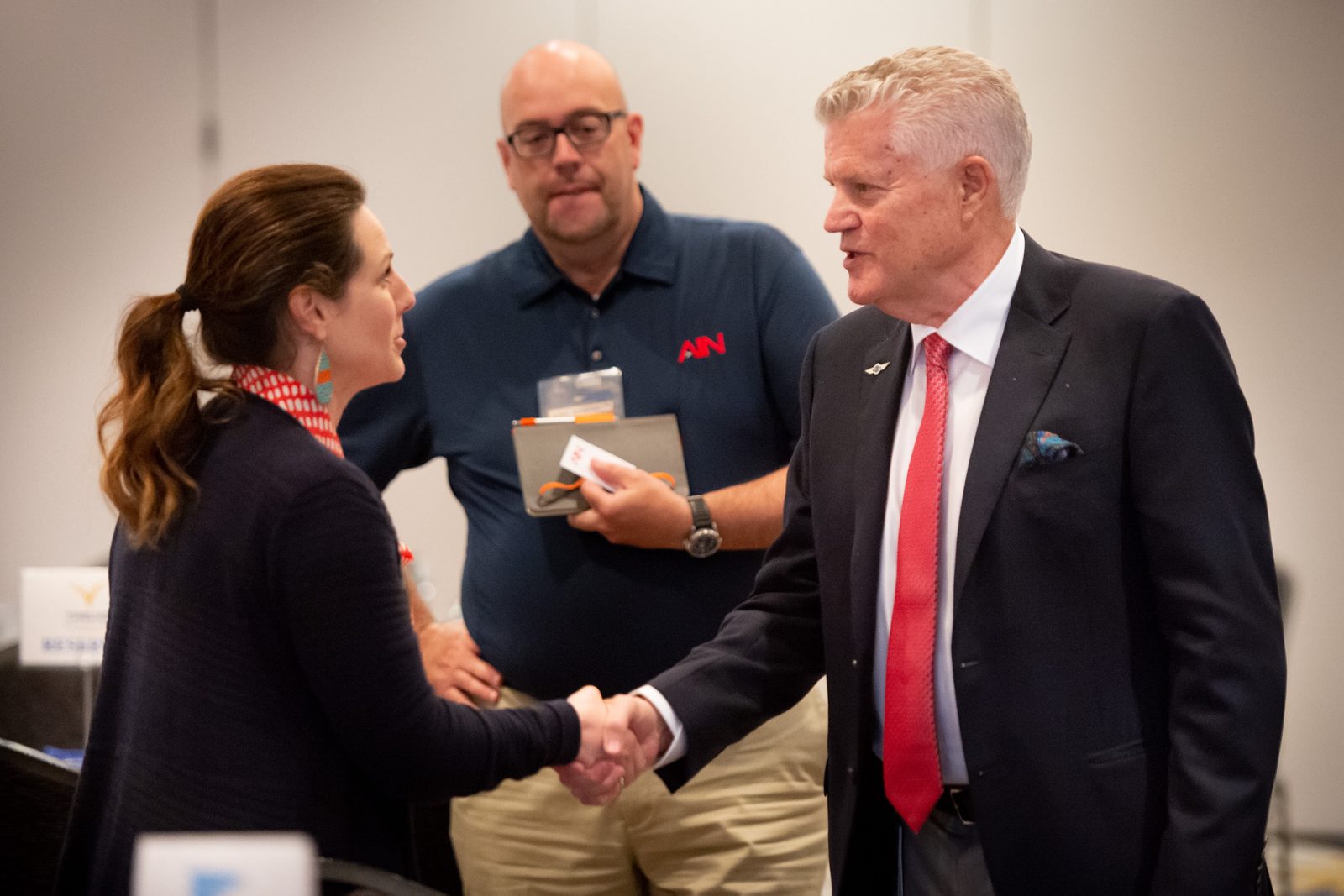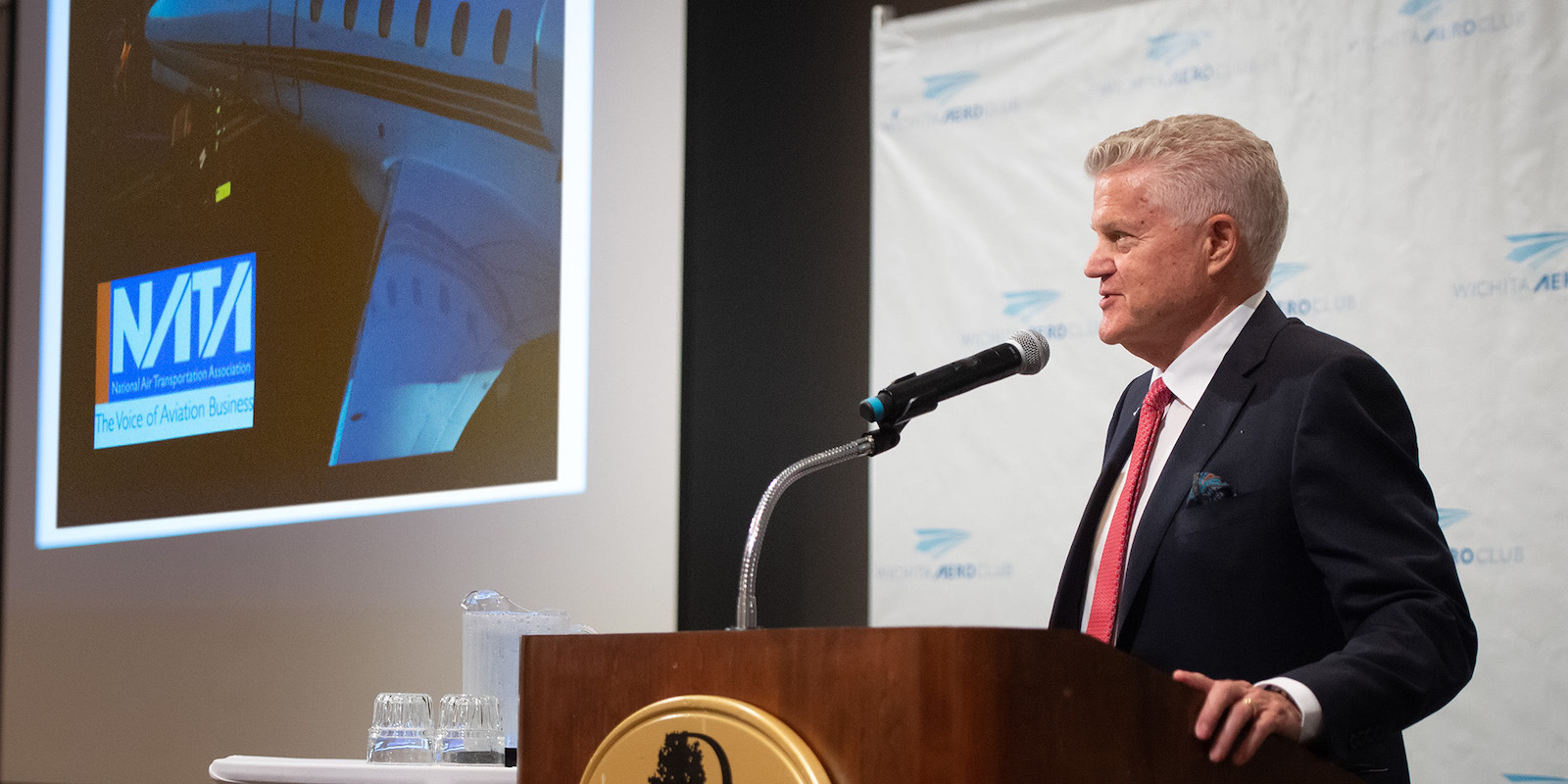Raising Our Voice
07.05.19 · Ashley Bowen Cook
Aviation’s value to our cities and communities is obvious – at least to those of us in the know. We already understand the jobs, the business connections and the flow of products and commodities our industry delivers. The challenge now, National Air Transportation Association (NATA) President Gary Dempsey told the Wichita Aero Club in June, is to spread the word and get involved in making sure the public knows, too.
“The products you make in this room, in Wichita, Kansas, go worldwide, and we need infrastructure, so we need to be engaged,” Dempsey said. “That’s what I’ve learned throughout my career.”
That means talking to members of Congress and coming together to solve some of the issues facing aviation.
“We have 100 new congressmen who haven’t voted on aviation yet,” Dempsey told the audience. “And we need to educate them. Your help is critical. They’re interested in jobs in your community.”
An earlier engagement by business leaders might have prevented the closing of Santa Monica’s airport, he said. We in the industry know how vital small airports bring critical business aviation traffic and investment to their communities.

Fueling the Future
Another big topic for the new NATA president is sustainable aviation fuel (SAF) and the upcoming focus needed on these low-carbon alternatives.
Even though the fuels have been used commercially for more than a decade now, the challenge is ramping up the demand throughout FBO networks to create a market which produces a better supply infrastructure.
Business and commercial aircraft operators are already feeling pressure in Europe to cut carbon dioxide emissions. The public is ramping up against corporate aircraft seen as extravagant or harmful. That sentiment is starting to shift here in the United States as well. Especially in California.
Customers have asked NATA’s help in combatting the perception that aviation is polluting the skies.
“It’s become a big deal in California. Every owner was calling me that’s based in California,” Dempsey relayed. “’What are we doing? We just operate the aircraft; we can’t create fuel overnight.’ So we started asking questions.”
There are three distributors of SAF outside the U.S., but only one – in Southern California – in this country.
We have to get involved to increase the demand, he said, to increase the utilization. We’re trying to get SAF to be 30% of all aviation fuel by 2050. But that huge scale-up won’t happen without an increased commitment by users today. Gulfstream and Wichita-based Textron Aviation have been leaders on this front, flying thousands of hours with SAF.

Cleaner emissions won’t just have a positive effect on the environment, he said, they’re going to sell more airplanes.
Watching the Workforce
The shortage of qualified aviation workers and pilots isn’t news to most of the Aero Club membership. But what’s happening behind the scenes to fix it may be.
“Today, we actually are 40% lacking in line-tech jobs. I’ve never seen it so lean before,” Dempsey said. “We need people. We need pilots.
“The workforce needs your help in extending the word out that this is a great career. I see the future of aircraft that we’re building today with new technology that’s coming out. It’s going to be exciting. NBAA, NATA, GAMA, AOPA – all the alphabet organizations in Washington – are working on this.”
The recent FAA reauthorization act contains programs and funding to address the shortage. Dempsey said his organizations are working with universities and companies. He asked Aero Club members to be the mentors throughout the industry and proactive in workforce development.
“We need 100 more like you to work in aviation.”
NATA is making sure aviation’s leaders have the right tools to make that happen.
This column originally appeared in the July 4, 2019, issue of BlueSky Business Aviation News.
